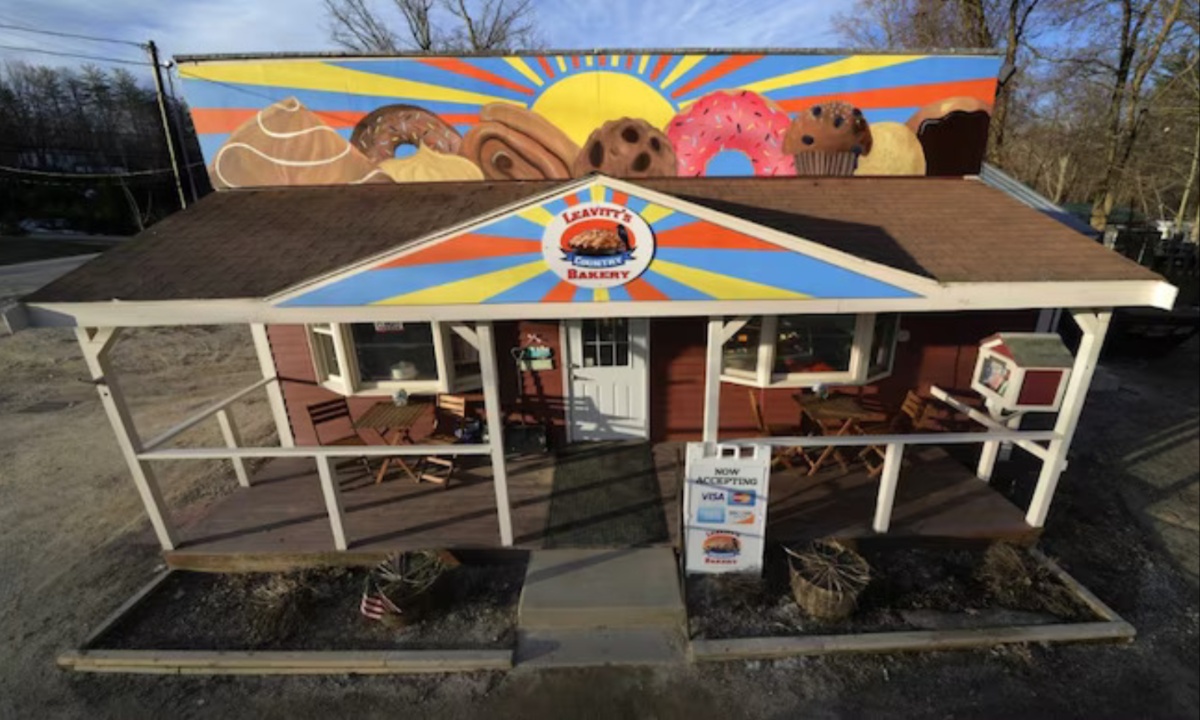A New Hampshire bakery owner, Sean Young, found himself in a legal dispute after a zoning code officer classified a student-painted mural on his shop as a sign rather than art. Young had displayed the painting, created by high school students, with excitement, only to be told it violated local sign regulations and needed to be altered or removed.
Young maintains that the painting, depicting oversized pastries under sunbeams, is an artistic expression rather than an advertisement. Frustrated by the town’s stance, he has taken legal action against Conway, arguing that the decision violates his First Amendment right to free speech.
Legal Battle Over Mural’s Classification: Art or Oversized Advertisement?
Young’s lawsuit centers on his belief that removing the mural would suppress artistic expression. In court, he expressed offense on behalf of the students who created the artwork, emphasizing that its removal would be unjust. The federal case is being heard by U.S. District Judge Joseph Laplante, who has yet to make a final ruling. While the trial lasted a full day, the judge allowed both parties to submit additional legal arguments before reaching a decision. For now, the painting remains in place, as it has since June 2022.

The town of Conway argues that the mural is not just art but an advertisement because it depicts the very items sold inside the bakery. The zoning board determined that if the painting had depicted something unrelated to baked goods, it would not have been classified as a sign. However, at approximately 90 square feet—four times larger than the permitted size for signage—the board insists it cannot remain unchanged. Officials say the regulation is meant to prevent excessive signage that could clutter the town’s appearance and distract drivers.
Zoning Officer Defends Regulations While Judge Adds Humor to the Courtroom Debate
Jeremy Gibbs, the zoning officer who issued the citation, defended his actions in court, stating that he was simply enforcing Conway’s definition of a sign. According to the town’s sign code, a sign is broadly defined as anything that conveys information, whether commercial or noncommercial. Gibbs explained that without such regulations, businesses could place signs anywhere, potentially creating safety hazards and harming the town’s scenic beauty, which is a key draw for tourists.
Despite the serious nature of the legal dispute, Judge Laplante added moments of humor to the trial. He joked about the lack of doughnuts in the courtroom and playfully questioned Young about the details of the pastries in the painting. At one point, he even debated Young’s description of a raspberry cookie, suggesting it looked more like the top of a cupcake. While the case raises significant legal questions about the boundaries between signage and artistic expression, the judge’s remarks brought a touch of levity to an otherwise tense courtroom battle.
